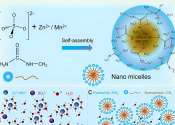Researchers develop a cobalt-free cathode for lithium-ion batteries
Researchers at the University of California, Irvine and four national laboratories have devised a way to make lithium-ion battery cathodes without using cobalt, a mineral plagued by price volatility and geopolitical complications.
Sep 21, 2022
0
790









